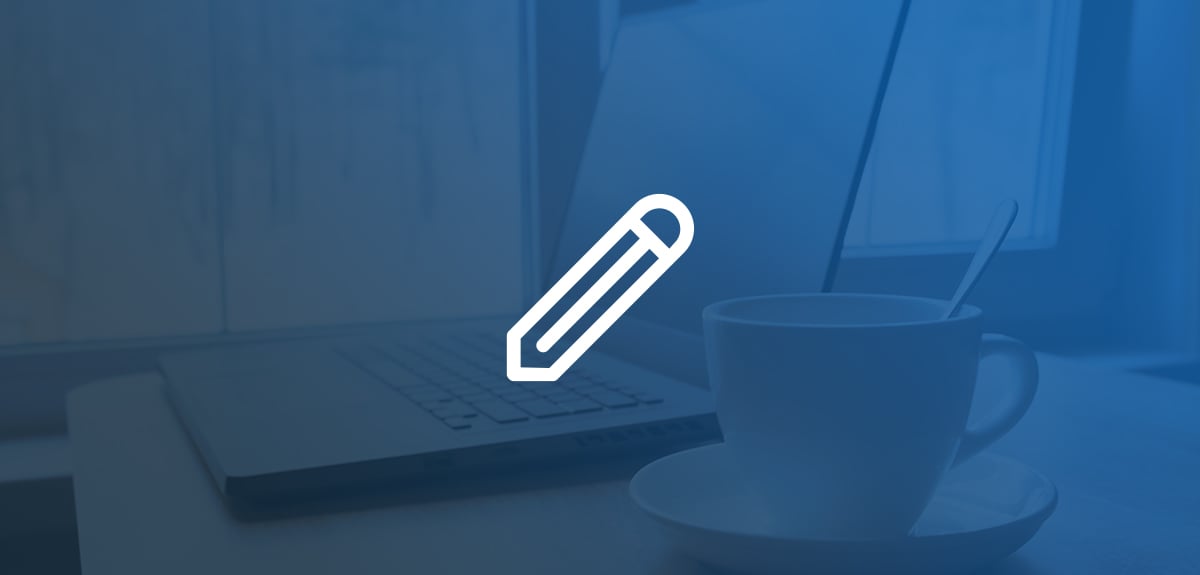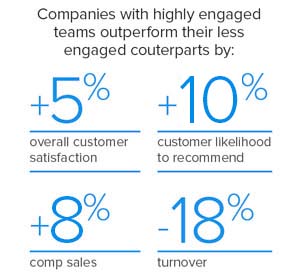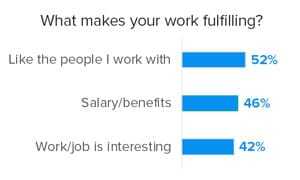Best Practices of a Proactive Employee Engagement Program
Published on Oct 28, 2022

With employee retention a primary concern, monitoring and assessing the employee experience (EX) to improve business outcomes has never been more important. Employee job satisfaction has become a critical objective as companies look to attract and retain as much talent as possible, and a proactive employee engagement program—the ongoing practice of seeking and acting on employee feedback—should be among your core priorities.
From employees’ heightened standards of a safe + healthy work environment, to the continuous need for improved diversity, equity, + inclusion (DEI) efforts, to the need to foster positive team environments that align with employees' career needs, organizations must work harder to understand what matters most to employees and create the kind of employee-centric culture that wins their loyalty.
But while most companies are measuring some aspect of employee engagement, many lack the continued dialogue and follow-through employees need to feel heard and supported.
And who ultimately feels the impact of a disengaged workforce? Your customers.
Here’s the good news: our research shows that employers that prioritize the employee experience are rewarded—not just with lower employee turnover and more engaged employees—but with more loyal customers.
To properly address the importance of employee engagement and improve the employee experience in an effective way, you need a true EX program that works with employees to address shortcomings before they become critical issues.
Employee engagement is connected to customer satisfaction
Engaged and happy employees are more loyal and willing to go the extra mile, helping create highly satisfied and loyal customers. And highly satisfied, loyal customers lead directly to growth in sales and profits.

That progression is called The Service Profit Chain. It’s a concept that was developed at Harvard Business School by a group including one of SMG’s founders, Len Schlesinger, and is the principle our company was founded on.
But The Service Profit Chain isn’t just an academic theory. When put into practice, it has a huge impact on financial performance. For the most intuitive results, an EX program should integrate employee feedback with customer experience data—demonstrating how higher employee engagement equates to better performance with customers.
For example, specialty retailer BevMo! was able to find meaningful correlations in their employee and customer experience (CX) data when an analysis showed a connection between top drivers of employee engagement (Rewarding Work and Opportunities to Use Strengths) and top drivers of CX (Availability of Merchandise and Availability of Assistance).
The brand leveraged these insights by launching two training sessions, one focused on sales + recommendations, the other on checkout speed + friendliness. They also implemented an employee recognition program.
The initiative paid off with a 3-ppt increase in Employee Satisfaction, a 2-ppt increase in Customer Overall Satisfaction, and 1–2% increase in add-on + private-label sales.
Proactive employee engagement program best practices
Engaging in honest communication with your employees and collecting their assessment of the workplace and their role in it has some key best practices behind it that may not be intuitive:
Pay and benefits matter to your employees
Employee priorities have changed drastically in the last few years. Whereas motivators to leave a job or be attracted to a new one were once centered around altruistic characteristics, like how rewarding the work is and the opportunity to apply or learn skills, now the primary motivators drawing employees to new jobs across every age group are pay + the availability of healthcare and other benefits.
When asked for the primary reason they wouldn’t stay at their job, most current employees cited pay. 70% also said salary is the top priority when considering switching jobs. And though this rings true across industries, it’s important to note grocery, c-store, and entertainment had the highest mentions of insufficient wages.
Now, more than ever, the financial incentives of the employee experience cannot be ignored, but it’s also important to remember how without employee engagement, the employer-employee relationship will remain shallow and subject to the whims of the labor market.
Fulfilling work helps keep employees
Pay matters, but if you really want employees to engage with the company and put in the best possible work, other aspects of the job must be addressed, as well.
A lot of brands' best efforts on engagement surveys only focus on job basics. Rarely do they highlight the meaning of work. At SMG, we ask people about teamwork, managerial support, recognition, empowerment, and growth opportunities—it helps us bridge the gap between how they feel about the job and how working makes them feel.
When one of our recent studies indicated a fulfilling job is the key reason people stay at their current employer, we went on the hunt for what “fulfilling work” means to people. The top three responses we found for what makes work fulfilling were working with colleagues they like, salary + benefits, and interesting work. All three responses were within 10ppts of each other between 52% and 42%. While pay and benefits are important, it’s not where job fulfillment ends.

Workers want compensation they see as fair, and they want jobs with a purpose. Whether that’s making customers happy or moving up in the company, rewarding work matters. Brands must own their company culture and know what their employees want—really want—to align opportunities with expectations.
How to build effective employee engagement strategies
A key question when it comes to applying an EX program is where to start. Do you roll out a new recognition program? Send all managers to extensive training? Is there a benefit to purchasing new equipment?
While these all may be effective tactics for realizing some kind of business improvement, great leaders know employee engagement initiatives should be about making the biggest impact with employees. By identifying these key drivers, you can determine an approach to a proactive employee engagement program that results in more impactful change.
And this isn’t just about focusing on the lowest-performing area from the most recent employee survey; that doesn’t account for how that area might drive employee engagement. Understanding which measurements are most impactful and which areas for focus (AFFs) hold the most potential.
Determining what to measure to maximize impact can be a complicated affair. A best practice is to use a "relative weights" model, applying structural equations to analyze data to determine which measures drive engagement and show correlation with each other.
You then need to isolate the AFFs that are going to make the biggest impact at the location level by separately measuring two things: 1) the weight of impact a measure has on promoting employee engagement, and 2) how much that measure deviates from the rest of the organization. Each of these scores represents a different AFF, with the eventual goal of raising the first score—indicating employee engagement—and lowering the second score—showing a reduced deviation of performance from the rest of the organization.
Meeting both measures has led to improvement in engagement by +16ppts, while companies that decline in these measures have seen engagement decline by -27ppts.
Demonstrating the ROI of a proactive employee engagement program
Implementing an EX program is only the first step. To gain the organizational buy-in needed for long-term success, you need to be able to demonstrate the impact higher engagement and lower turnover have on the bottom line.
When a large fried chicken quick service restaurant chain saw employee engagement remaining flat and turnover rising, they leveraged their employee experience program for insight. Their SMG Clients Insights team ran a key driver analysis, which showed that employees who receive recognition and training are more likely to feel they have an opportunity to use their strengths—a key driver of engagement.
To help fuel engagement, the leadership team launched a new program to provide consistent training and career goals. Some specific actions included:
- Empowering team members to own their training
- Providing employees with clear job expectations + opportunities to learn and grow
- Creating a resource for managers to track where team members excelled
These engagement efforts not only created a double-digit increase in Opportunities to Learn + Grow and Overall Engagement, but also resulted in a double-digit decrease in turnover—saving the brand thousands of dollars in turnover costs.
To help brands calculate the business impact an employee experience program could have on their organization, we’ve created an interactive turnover calculator. See page 17 of this guide to plug in your information and calculate how much you could save by prioritizing employee engagement and retention efforts.
Don’t ask if you don’t intend to act
It’s crucial to know how engaged your frontline employees are. That’s why you should seek feedback at every opportunity with solicited and unsolicited surveys. But if you stop your progress there, you’re not going to make things much better. In fact, you’ll likely make them worse.
Our data shows that employees recognize and respond to follow-through. When managers act on the results of employee engagement activities, employees become substantially more engaged.
Workplaces with the highest level of follow-through after an employee engagement survey show an 18% increase in engagement on the next survey. What happens when there is little follow-through? A 21% drop.
It's important to note collecting feedback isn’t everything. Leaders also have to commit to action even before they ask employees about engagement. Then, they must follow through with some action or response once the surveys are in. Engagement has to be a year-round, organizational priority for the entire company.
It’s difficult to do on your own
These proactive employee engagement program measures can have a significant positive effect on your business, but they’re extremely difficult to accomplish on your own. Finding a clear path to checking in with employees, finding the areas of most potential, and coming with the insights necessary for making the most impactful change is best done with the assistance of an EX management partner.
Today SMG continues to use the foundational principle of The Service Profit Chain to inspire experiences that improve people’s lives—helping brands get smarter about their customers, patients, and employees, so it’s easier to deliver actionable insights across their enterprise.
To learn more, download the guide: Why customer-centric organizations prioritize the employee experience: 5 ways to reduce turnover + drive growth. And for more information about SMG’s employee experience solution, please contact us here.
Related articles

Why Voice of the Employee (VoE) matters: Turning feedback into action
Empowered employees drive business success. Discover why Voice of the Employee (VoE) is essential for engagement, retention, and customer satisfaction—and how to turn employee feedback into meaningful

Two-way street: Employee engagement impacts the customer experience journey
Engaging with and improving the employee experience leads to satisfied, loyal customers. Here's how to find an effective EX solution to help.

4 Solutions Every Customer Experience + Employee Experience Program Needs
Uncover four cardinal solutions every successful customer experience (CX) and employee experience (EX) program should implement.